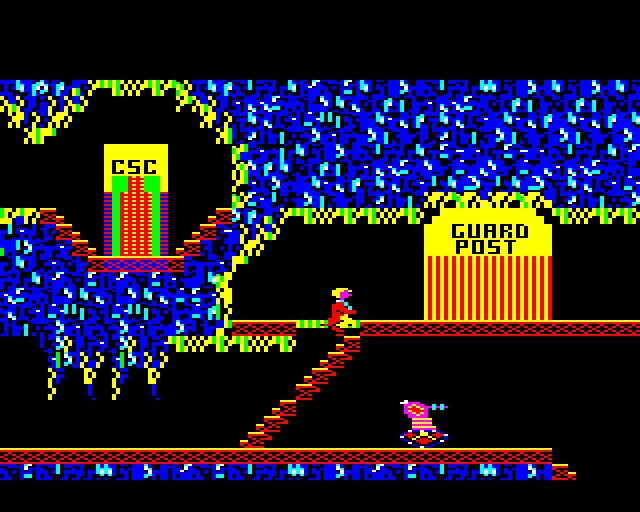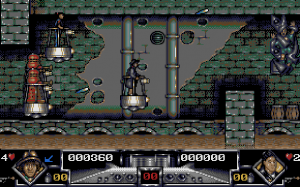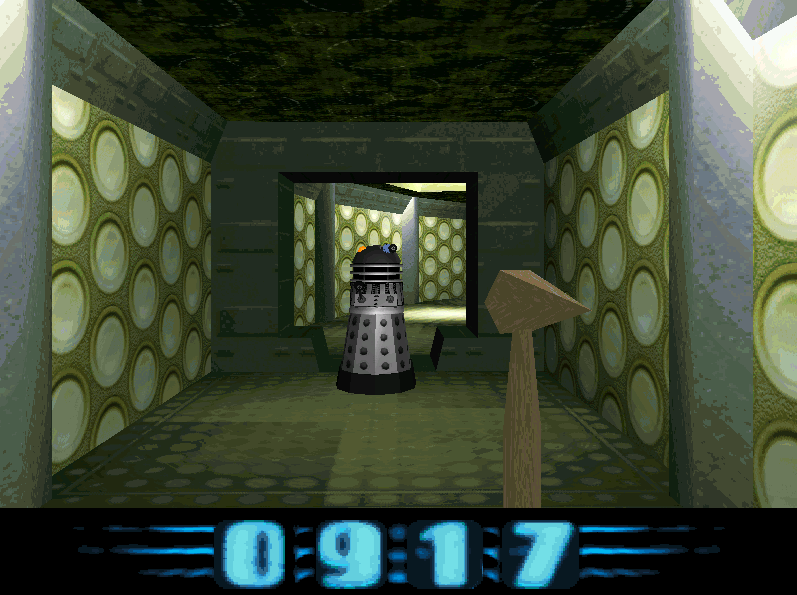There is more familiar territory with the follow up, Doctor Who and The Warlord, which in 1985 followed in the footsteps of the text adventure version of The Hitchhiker’s Guide to The Galaxy, right down to getting former Doctor Who producer Graham Williams on board. It’s nigh impossible to find these days, but was advertised heavily on BBC TV to go with the Computer Literacy Project.
[divider]

Far more interesting, and more of an actual, game came in 1986, when Micro Power released Doctor Who and the Mines of Terror. A heavily ambitious game that began life as the sequel to the very popular Castle Quest, and then Dinosaur Planet, (Turned into a licensed game mid-development), Mines of Terror came with an extra ROM chip that was needed to run the BBC Micro version of the game. The reason for this is that the game could scroll, and was actually a rather big metroid-esque adventure game, albeit with no weapons outside of your trusty and totally not copyright-sidestepping cat Splinx, who could, with the help of LOGO programming,, take on the fearsome Not-Daleks. It didn’t sell brilliantly, and even if it had, the sheer costs of making the game would have killed off Micro Power anyway, once again leaving the Doctor’s adventures in a protracted limbo.
[divider]

Respite would not come until 1992, three years after the cancellation of the series, in Dalek Attack. Without the Doctor Who name, it appears that it might have been part of the Absalom Daak project at one point, or tied in to the popular comic book series. The game definitely looks the part, with sharp colourful graphics on the Amiga or PC versions that depict the second, fourth, or seventh Doctor quite nicely (though, of course, loses out if you play the ZX Spectrum), but sadly that is where most of the positives end, because the game is really not good.
The main problem is epitomised by the first level, a non-representative scrolling shooter where it’s easy to be hit, and pretty tough to hit anything else. There is no invincibility after taking damage either, so it is easy to lose several lives simply by touching a wall or the awkwardly placed two headed dragon at the end of the level, whose hard to avoid fireballs will take the rest of your lives. If you get past that (or use a trainer programme to give yourself the infinite health you need to get past it), you get dumped into the game proper: an awkward platform shooter that was all the rage on the Amiga by people desperate to ape Turrican. You collect holograms, and when you get them all you can pick up a key card, which lets you fight the boss. This, surprise surprise, makes the game end up becoming a repetitive slog, despite only being six levels long. I might be being a bit too hard on the game, not because it’s actually of merit, but because the developers, Alternative Software, tried to sue Amiga Power for doing the same thing!



